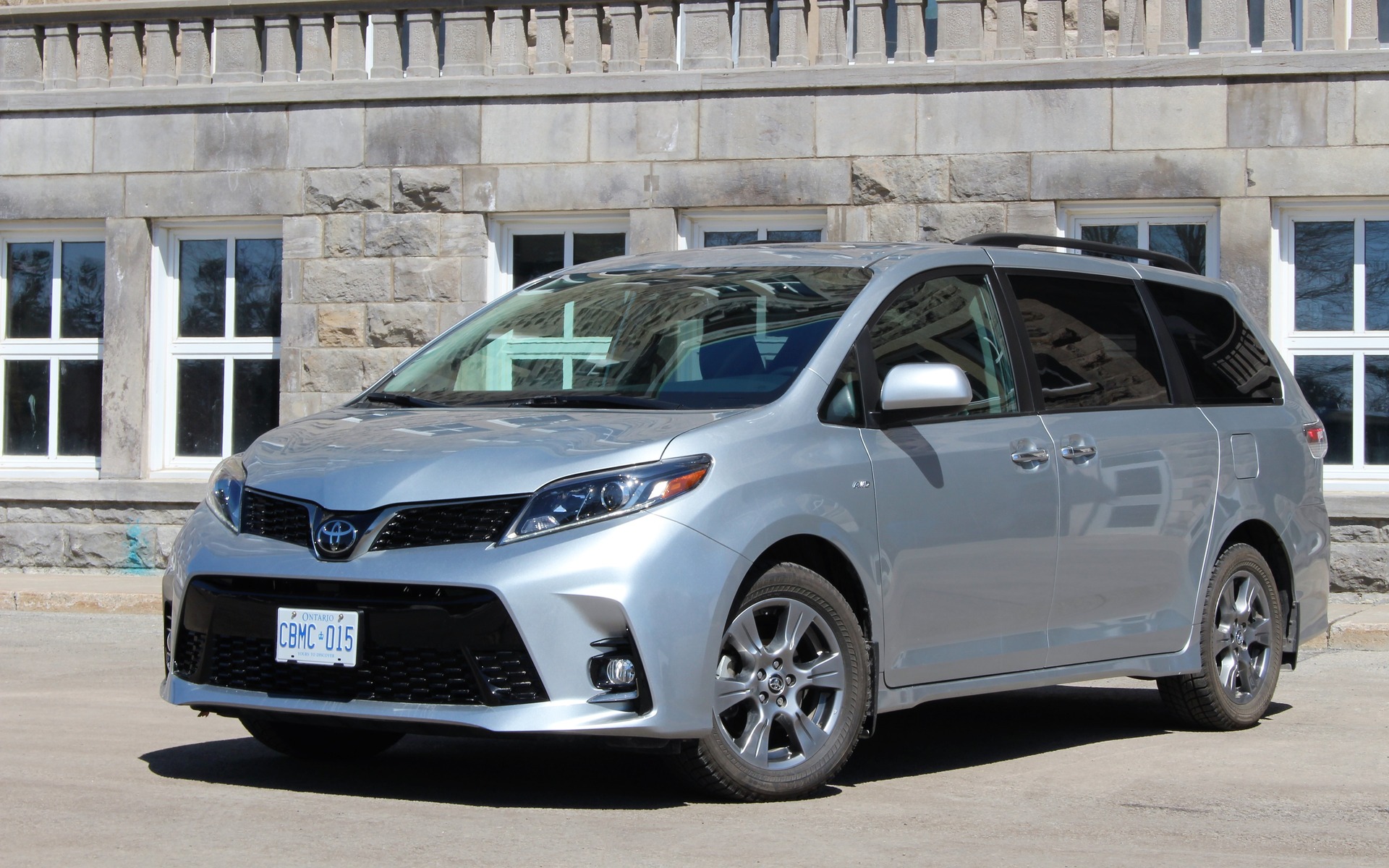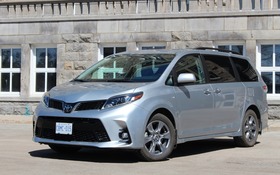2019 Toyota Sienna: Long in the Tooth

| Strong points |
|
|---|---|
| Weak points |
|
When a vehicle segment declines in popularity, or even when it stagnates, automobile manufacturers have a tough decision to make. Should they abandon the segment because designing and engineering a new-generation model won’t be profitable, or just keep selling the current model until interest dries out?
Obviously, most automakers have given up on the minivan, but some still believe that it’s a worthwhile battle. One of them is Toyota, who’s been offering us the Sienna since 1997, including the current third-generation model that was introduced in 2010 as a 2011 model.
- Also: 2019 Toyota RAV4 Trail: Son of FJ
- Also: 2020 Toyota Highlander: New Styling, More Efficient Hybrid Model
That means the Sienna will go largely unchanged for 10 years, but there are spy shots on the Internet indicating that Toyota will renew its minivan for 2021. During the last decade, the Japanese brand did give the Sienna several improvements, along with a couple of grille redesigns to prevent it from looking stale.
Under the minivan’s hood lies a 3.5-litre V6 that received direct injection a few years ago, and now develops 296 horsepower as well as 263 pound-feet of torque, well-managed by an eight-speed automatic transmission. From a performance standpoint, that’s more than enough muscle for hauling the kids and the family dog around, and for providing a maximum towing capacity of 1,588 kilograms (3,500 pounds)—in all but the base trim level. It’s the most powerful minivan on the market, if only slightly ahead of the Chrysler Pacifica, the Dodge Grand Caravan, the Honda Odyssey and the Kia Sedona.

If the Chrysler has the advantage of boasting an optional plug-in hybrid powertrain, the Sienna is the winter-friendly choice as the only minivan with an available all-wheel drivetrain. The latter motivates the front wheels under normal driving conditions, but can quickly send up to 50% of engine torque to the rear ones when slippage is detected. The system also spins all four wheels during acceleration, reducing torque steer, but not eliminating it. The downside is that since the AWD hardware takes up more space under the floor, there’s no spare, so run-flat tires are installed at the factory—which cost more to replace.
As for fuel economy, the 2019 Toyota Sienna is rated at 10.8 L/100 km in combined city/highway driving. On paper, it’s nose-to-nose with the Odyssey and the Pacifica, although the latter’s PHEV variant that’s way more efficient. Adding AWD to the Sienna raises consumption by about one litre for every 100 km, and we averaged 12.0 L/100 km during our test, which included more city driving than highway cruising. That’s a substantial amount of fuel, but still reasonable when we consider what the alternatives are regarding versatility and passenger capacity—namely, full-size SUVs that consume 13 L/100 km and above.
The interior design of the Sienna is actually not that bad, and the dashboard still looks modern despite having been refreshed for the last time in 2015. The climate controls are simple to use and there are plenty of storage points for family road trips. Three-zone automatic climate control is standard, but to get heated front seats, we must move up to the LE trim, and a heated steering wheel is reserved to the Sienna AWD XLE with the Limited package—the costliest one of the bunch. On longer drives, the front seats lack comfort and offer very little lateral support.
The infotainment system relies on a seven-inch touchscreen in the base trim and an eight-inch unit in the rest of the lineup. Many main functions can be quickly accessed with physical buttons, so that’s good. There are five USB ports for keeping everyone’s portable device juiced up. On the other hand, while Apple CarPlay is standard across the board, Android Auto integration isn’t offered at all.

A rear-seat entertainment system is available in higher-end trims, which includes a remote control and two wireless headphones. However, there’s only one roof-mounted, 16.4-inch ultrawide screen that can project two images at the same time, side-by-side—such as a movie on one side and a video game on the other. How kids can watch this screen without getting nauseous is beyond us.
There’s nothing exciting about the 2019 Toyota Sienna’s drive. Or should we say it’s the least engaging minivan of them all, despite its engine output. At least its steering calibration was revised a few years ago, reducing its vagueness. The SE and SE AWD trims get a sport-tuned suspension, which does nothing to make the minivan more amusing. The Sienna’s virtues are interior space—it’s the biggest—and a solid reputation for reliability.
Priced from $35,295 before freight and delivery charges, the Sienna isn’t cheap. We recommend skipping the base trim, as the LE boasts an eight-passenger seating capacity and power-sliding doors for $38,700. To get all-wheel drive, we must shell out at least $41,500, and our loaded Sienna SE AWD checks in at an eyebrow-raising $51,370.
So which is the better minivan? Well, we can rule out the Grand Caravan right away, and the Pacifica’s ride quality is a tad better than the Sienna’s. Meanwhile, the Sedona does everything right and is priced to sell, but its resale value is poor. The Odyssey is technologically up to date and arguably the least boring to drive. On the other hand, the Toyota will hold its value for a long time, it’s the least likely to break and it’s the one with the most cargo space—whether the seats are all occupied or all folded down.
It seems as though a minivan will continue to be part of Toyota’s lineup for another decade, as an all-new generation should be unveiled within the next year. The current Sienna is old, but it’s still a good choice. No minivan represents an emotional purchase, but the Toyota is the most rational one.











